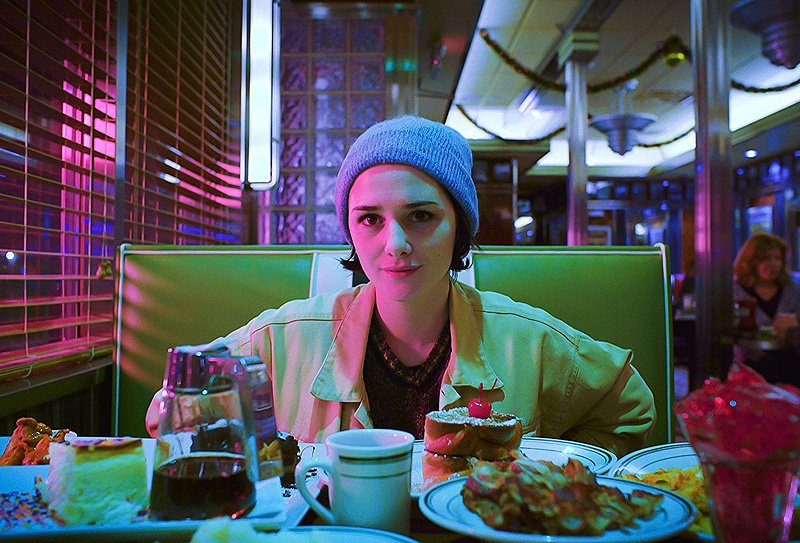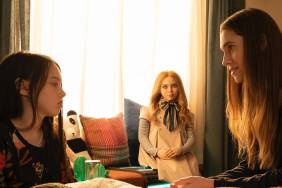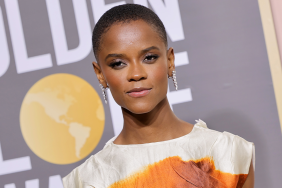Last month, the indie film Like Me debuted in select theaters, and we were lucky enough to introduce one of the screenings with talented young writer/director Robert Mockler present. Afterwards, we had a chance to speak exclusively with producers Jenn Wexler (Darling, Most Beautiful Island) and the legendary Larry Fessenden (The Last Winter, Habit) of Glass Eye Pix. Check out the interview below, in which we also discuss Fessenden’s currently-lensing directorial project Depraved, as well as Wexler’s punk rock horror directorial debut The Ranger, which premieres as a Midnighter at this year’s SXSW festival.
Like Me follows a strange loner named Kiya, played by Addison Timlin (Little Sister, The Town That Dreaded Sundown), who begins filming a crime spree and posting it online. Her obsession with how her actions are percieved online takes her down a dangerous path, and also brings about an oddball relationship after she kidnaps a hotel manager (Larry Fessenden).
Click here to rent or purchase Like Me on Digital HD!
ComingSoon.net: It must be pretty exciting to not only see the response but to have the film held over for an extra week. Do you have any thoughts about how the film’s performing so far?
Jenn Wexler: We’re really excited. We were just so excited that we were gonna play at IFC Center, because that’s one of our favorite theaters in the city. We weren’t expecting to be held over. It’s just so awesome that it’s gotten a really great response, and shows that have been fully sold out, and this is the kind of movie that really relies on word of mouth. I think the word is spreading, and that’s just so awesome.
CS: Rob was telling me that the movie will be in ten theaters around the country, which is pretty exceptional for a movie that’s both this small and this strange.
Wexler: Totally. I mean, that’s kind of what attracted me to it in the beginning, because the script was always kind of like that, and actually when I met Rob and we first learned about the project, he had sent us, in addition to the script, all these quickly cut montages of stuff, and while we were reading the script, there would be little cues for you to go to Vimeo to watch one of the montages. This is the travel sequence, testing out this montage, and you would click on it, and it would all be existing footage that he used from existing videos, but the way he edited it was so cool, and we were like, it’s so dope that he was even thinking about it in the script stage.
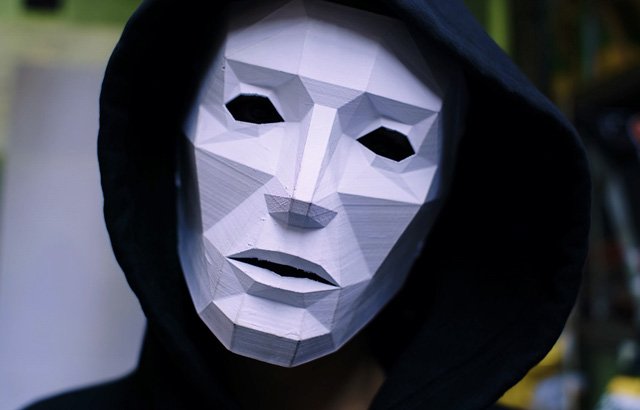
CS: Right, and he was telling me that he and Jess, over the course of four years, had the whole movie up on their wall, all these references. Different things like “Suspiria” and “Blood and Black Lace,” and photography. How prepared or overprepared was he compared to some of the other filmmakers you’ve worked with?
Wexler: I would say that, with Rob, this was something he’s wanted. This is a movie him and Jess have wanted to make for a very long time, and they lived and breathed it. So, you say, it was really cool when you walk into their apart, you walked into the movie, essentially. Their walls were wallpapered with images of references and, not just movie references, but just stuff they found on Tumblr or Instagram, photos of chicks eating candy. Stuff that, if you walked into their apartment, you’d be like, “Whoa. They’re so passionate that they made their entire apartment look like this. We’re gonna have a really cool movie.” Something that I liked about the movie was that I always felt that it was a feature-length version of scrolling through Tumblr, like the experience you have while you’re scrolling through Tumblr.
CS: Social media of it is obviously a big aspect of it, but Rob tends to play that down because another huge component of the movie is the journey of Addison’s character, and also kind of the humanity that’s revealed between her interactions with Larry’s character. Can you talk about the balance between the social media aspect of it and the media commentary, and also just telling a story about a couple of characters, essentially a two-hander?
Wexler: I think the obvious thing that people would use to describe it is saying, “a movie about social media,” but it’s so cool that Rob has always thought of it as a “lonely man” movie in the vein of “Taxi Driver,” and that just adds so much more of a message, and I think that it’s a really nice thing to discover. People might see marketing and it seems like a social media movie, but then you go and you watch it, and realize it’s this really intimate— you’re just in it with these characters. I think it’s a really nice surprise, and journey.
Larry Fessenden: Yeah, and even the fact that it’s a social media movie, I would say that the filmmaking is very cinematic, it’s actually a mind that’s fractured by technology and impatience. But this creates a kind of fractured narrative rather than telling people on their videos, so I even think, in addressing social media, it has a cinematic sensibility, and as Jen was saying, there’s a much longer tradition of exploring the lonely man, like “Taxi Driver” or “One Hour Photo,” that’s another one that Rob often referenced.
Wexler: And it works, thematically it makes so much sense. Everybody wants to connect but nobody feels connected with each other, and you’re just with these characters who are disconnected from everybody, and they’re just trying to find a connection with each other.
CS: Visually and structurally, it’s very similar to something like “Badlands” or “Natural Born Killers,” but those movies are essentially “Bonnie and Clyde” movies, whereas this is a film essentially about one character. The fact that she’s this petite, little woman adds this extra layer of danger and vulnerability to it.
Wexler: She’s been trying to find her Clyde, like in Larry’s character.
Fessenden: Yeah, exactly. Also, the way she’s introduced, you actually don’t know if she’s a man or a woman, and I think Jeremy, the dude in the gas station, says “little fella” or something like that, to sort of throw you off even further. I only noticed it watching the movie recently because obviously we know it’s Addison, as filmmakers, but I don’t think it’s clear. And that’s a nice touch. It’s a very generic mask that she’s wearing in the beginning.
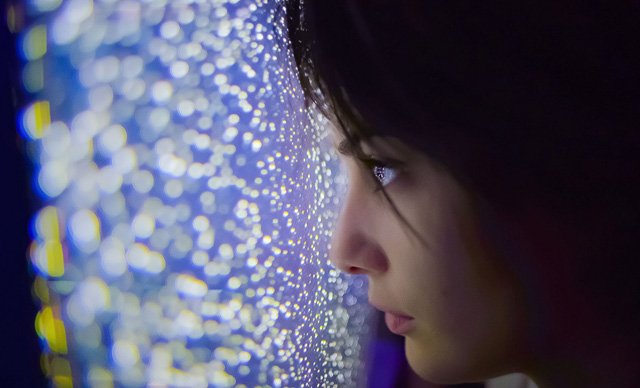
CS: How did you guys initially get connected and hook up with Robert and Jess, and what sparked you to the project?
Fessenden: Jenn brought us to the project. Tell us how you found it, Jenn, through James Belfer’s company.
Wexler: Yeah, through James Belfer, and a filmmaker friend of ours, Michael, who landed on it. They contacted us and asked if we would be interested in checking out the material, and checking out Rob’s sizzle reel that he had created, and then I presented to Larry. But one thing about when I was first reading the script is I was reading on the subway, and I was in the middle of the torture scene, Larry’s torture scene, and I was so horrified by what I was reading, and at the same time fascinated, that I missed my stop. I looked up and I was three stops past where I was meant to get off.
CS: It’s that good.
Fessenden: Yeah. It was an amazing script, and one thing that it had was hyperlinks, which indicated to me that the team, Rob Mockler but also Jessalyn Abbott, who’s been a longtime collaborator of his, they really had done the deep dive into this material, and it’s both very personal and very referential to stuff they’ve been seeing on the internet for years. They had created a real sense of the script, and this very dynamic way to interact with it, and so God help anyone who’s just wandered into this script, but there was so much multimedia experience from the get-go.
CS: Yeah, it’s inherently part of the subject matter. And Glass Eye has been a proving ground for a lot of really talented younger filmmakers to make their mark. What are the criteria that you’re looking for in your stable of talent, and what are you decidedly not looking for?
Fessenden: Well, we’re not looking for standard scares. Even though I do enjoy that kind of movie, I have sort of a rivalry in my own mind with Jason Blum, who creates these, I think, often really exciting set pieces, movies that are clearly designed for the jump scares, the creepy kind. I think some of those are really successful. It’s a fun experiment to make a movie like that, but it’s not what initially draws me to the material. I think originality and uniqueness, and also being able to spin the idea of what horror even means. We don’t even only make horror films, but that seems to be our palette, the dark topics. I just respond to filmmakers who are passionate and often fresh out of the gate, who want to tell their story, and create aesthetic experiences.
Wexler: For example with “Darling,” I read the script, and went, “Oh my god, I need to be a part of this movie, this needs to be a part of my life.” That’s a thing you can’t really put words to, that feeling.
Fessenden: That’s the thing, because there’s no scheme. The last thing I’m doing is calculating whether it’ll be a moneymaker because that would just go down the rabbit hole that I can’t even— I have no talent for that. But the idea of uniqueness, being involved with a filmmaker who’s passionate, and we have a small group. When Jenn brings me a project she’s passionate about, I’m going to pay attention. And a few of our other comrades who’ve been around, that I’ve known for a long time. It’s a very affinity-based thing. It’s hard to just read a cold submission and judge for a filmmaker’s potential on that.
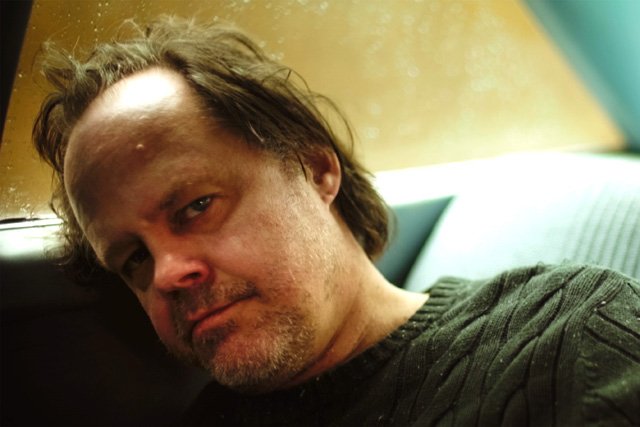
CS: Your character is so vulnerable. He’s very raw, and he kind of reveals himself, and we find in a lot of ways that he’s just as flawed as her character. Is that important to you, bringing out the humanity not only in your character but in hers?
Fessenden: Honestly, yes. I really believe that acting is about opening yourself — literally, sometimes. I think that’s when you’re offering something to the audience, a little piece of humanity, and that vulnerability that unites all of us. And that is why a moment resonates, and it’s really the only thing that I know how to bring to a piece. I always say that if you have a villain, you still have to find the humanity. As an example, even the most extreme character has a worldview where what they’re doing makes sense when they’re doing it. Often, finding that in a role is, I think, what an actor has the opportunity to do.
CS: Rob didn’t tell me what the budget was but he said that some cars cost more money than this movie.
Fessenden: That’s certainly true. [laughing] I wouldn’t set the bar that high. Some couches cost more than this.
CS: When you’re making a movie this small, there’s always challenges, like locations pulling out, or weather, or all kinds of calamities. What were the biggest roadblocks your team faced over the 20-day shooting schedule?
Fessenden: Well, you did literally seventy budgets. You would shave off $18 and give us an entirely new budget for this movie. We were thinking $1.5 million or something, and I can tell you it didn’t land there.
Wexler: We could have made this movie at fifteen different sizes. There was an approach for every size of it. But, I mean, one example in terms of that is, we were talking about the couple-million dollar version of this movie, we were talking about building a lot of the hotel room stuff. But then, when we figured out what our budget actually was, we were like, “Are we making this or not?” and of course the answer is always, “Yeah, we’re fucking making it, and we’re gonna figure out how to do it for this budget.” Then, me and Jessalyn and Rob and the team just hit the ground, and Jessalyn found these dope motels, like these themed motels. We had one theme motel near Rockaway Beach in New York, and then we had another one in upstate New York, and between the two motels, we were able to build this movie that feels like you’re on this road trip, and you’re going from one place to the next, but the way that they were designed and everything, that’s how the motels were. I think when you’re making these sets, maybe you’re thinking more in terms of, “Well, I can’t build this thing, so I need to find a real location, and we gotta figure out how we can shoot there.”
CS: Getting something on film is better than getting nothing on film, at a higher price point.
Fessenden: This movie originally was a road movie that took place in the desert, and I think it really had all of the scenes that were shooting in the West. Because Jenn had me filmed in L.A., and there were some places in that area where that was possible. I don’t know, with me, I can only say what I always say, “Come on, guys, let’s just shoot where we know, and where we are, and where we can do reshoots and pickups.” We reduced the footprint of the story considerably, and yet still found the diversity to make this thing. I always say that art direction, choosing a location, is a very powerful thing. There’s so much great stuff, you just have to find it.
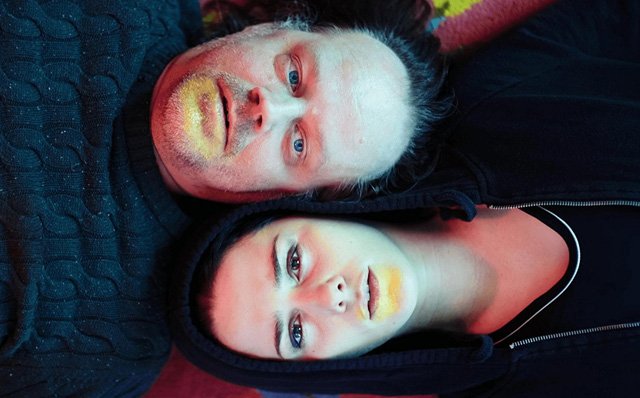
CS: Yeah, absolutely. And you guys are about to embark on another little journey with “Depraved,” right?
Fessenden: Yep.
CS: And that’s been described as kind of a contemporary take on Shelley’s Frankenstein. What made you choose this for your first directorial project in five years?
Fessenden: Well, I’ve been trying to make it for five years. I’ve taken a lot of time to make unusual films. It’s the same sort of thing, we had a bigger budget, which was realistic to the script, but then there’s the day you wake up and you think, “How are we gonna keep moving things around?” You take meetings… I think the irony of it is, this is what we do, this is what we like to do, and I don’t mind telling filmmakers to give up the dream of the bigger budget and just roll some tape, so we just decided, “Let’s just do this.” Jenn just finished her movie last spring, and she’s bringing in talent, so I think it’s just a great opportunity that we’re all kind of jazzed we get to make this movie. We’re just ready to keep working. You can’t let the industry determine whether or not you’re gonna be an artist. That’s the theme of Glass Eye, and as they say, I have to take my own advice every now and again.
CS: Larry mentioned that “The Ranger” is in post, now. What was that experience like for you as a first-time director, and how is it shaping in relation to the movie you initially had in your head, Jenn?
Wexler: I just had the best time in the world throughout this entire process. It was very exciting. I’ve worked with a lot of directors and I love producing, but it was very exciting to be the director on this. This is a movie that one of my best friends and I— it was his senior thesis when we went to college together, and I always loved the concept so much, then when I figured out how to make movies, I was like, “Yo, find that script, and let’s make it way better than it was when we were in college, and let’s make this thing.” Because I’m used to being on set and budgeting, I was very aware of how to bring this thing to life, and I certainly storyboarded it long, long, long before it was initially greenlit. All I can say is that I was in heaven throughout the entire process.
Robert Mockler’s Like Me is now available on VOD and Digital HD.
